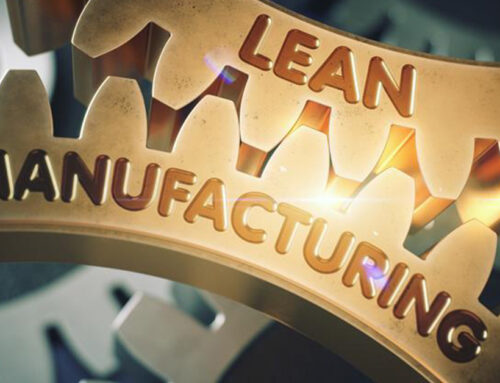
How Can JIT Delivery Improve Your Business?
If you’ve spent time in the manufacturing industry, you’ve likely to come across the term Just-in-Time (JIT) delivery. This is an inventory management strategy that helps businesses maximize daily output by reducing time spent on repetitive tasks and increasing order fulfillment. Let’s delve deeper into JIT delivery to understand how it can benefit you.
Grasping the concept of this strategy, its history, and its benefits is crucial for understanding how it can improve your business operations. By the end of this article, you should have a clear understanding of JIT delivery and be one step closer to integrating it into your processes.
Not Literally “Just in Time”
Despite its name, Just-in-Time delivery doesn’t mean products arrive precisely when needed. Instead, JIT is an inventory strategy that streamlines the movement of goods from warehouses. Also known as the Toyota Production System (TPS) or lean manufacturing, JIT delivery is easier to grasp than it may initially appear.
In essence, JIT delivery just means ordering stock as it’s needed rather than in bulk. This approach significantly lowers overhead costs, enhances supply chain efficiency, reduces waste, and optimizes labor. Whether you need industrial lumber, pallets, crates, or other materials, JIT delivery ensures timely arrivals.
You might wonder what sets JIT delivery apart from other inventory management methods. While it may seem straightforward, the logistics behind JIT are quite complex. Manufacturers offering JIT delivery must have the capacity to meet partners’ demands promptly, have redundancies in place, possess the workforce to fulfill orders swiftly and maintain transportation capabilities to ensure timely deliveries.
Due to these complexities, JIT delivery wasn’t always viable for manufacturers or suppliers. It’s a relatively recent development in the manufacturing landscape.
A Brief History of JIT Delivery
JIT delivery was first introduced by the British Motor Corporation in Australia and soon gained traction in Japan during the 1970s. Post World War II, Japan’s geographic limitations, economic challenges, high unemployment, and the need to rebuild its industrial infrastructure made it an ideal setting for JIT to thrive.
Toyota, recognizing the potential of JIT, adopted the system and saw remarkable improvements in productivity and profitability. This success turned Toyota into the automotive giant it is today. By 1977, Toyota’s achievements with JIT caught global attention, leading to the widespread adoption of the Toyota Production System.
The benefits of JIT delivery are clear: it saves both time and money.
The Advantages of JIT Delivery
To truly appreciate JIT delivery’s benefits, we must compare it to traditional inventory management. Many businesses still forecast their material needs and stockpile goods in warehouses. While this can work during high-demand periods, it often leads to inefficiencies.
Here are the benefits:
1. Reduced Inventory Costs
One of the main benefits of Just-in-Time deliveries is that there is no mass inventory to take care of and store. By receiving products as you need them, businesses can minimize the amount of inventory they have in storage. This leads to lower storage costs and decreases capitol tied up in inventory.
2. Improved Cash Flow
With JIT deliveries you no longer have to spend money on buying inventory in bulk, storing it, and using your workforce to manage it. This improved cash flow allows businesses to allocate their money more effectively and in other more important parts of production.
3. Minimized Waste
It also helps to reduce waste within your manufacturing process. This includes minimizing excess inventory, reducing defective products, reducing products that may be damaged while storing, and optimizing the use of resources. This allows companies to operate more sustainably and reduce environmental impacts.
4. Enhanced Efficiency
JIT delivery significantly reduces the time employees spend managing inventory, enabling them to concentrate on more important parts of manufacturing. This shift not only boosts productivity but also enhances worker satisfaction by eliminating tedious tasks. This shift will help to increase efficiency and workforce retention.
5. Greater Flexibility and Resiliency
Just-in-Time deliveries will allow you to be more responsive to changes in customer demand. You can quickly adjust production schedules and products to what the market is currently needing. This means you won’t be tied up in inventory that does not fit what you need in the moment. This flexibility gives you resiliency with changes that happen within markets and can provide a competitive edge.
JIT Delivery – Efficiency Delivered
Conner Packaging has been a leader in industrial packaging for more than 40 years. We offer custom pallets, crates, and integrated packaging solutions to reduce in-transit damage, optimize supply chains, and reduce the total cost of transportation packaging. With educated and knowledgeable salespeople, subject matter experts, an experienced design team, and a packaging engineer on staff, we serve customers nationwide from our 17 plant locations.
Contact us today to learn about our integrated packaging services and how JIT delivery can serve your business.

![[PRESS RELEASE] Conner Industries Expands Integrated Packaging Division with Acquisition of Kirkland Sales Inc.](https://connerpackaging.b-cdn.net/wp-content/uploads/2024/05/Foam-Page-Featured-500x383.jpg)









